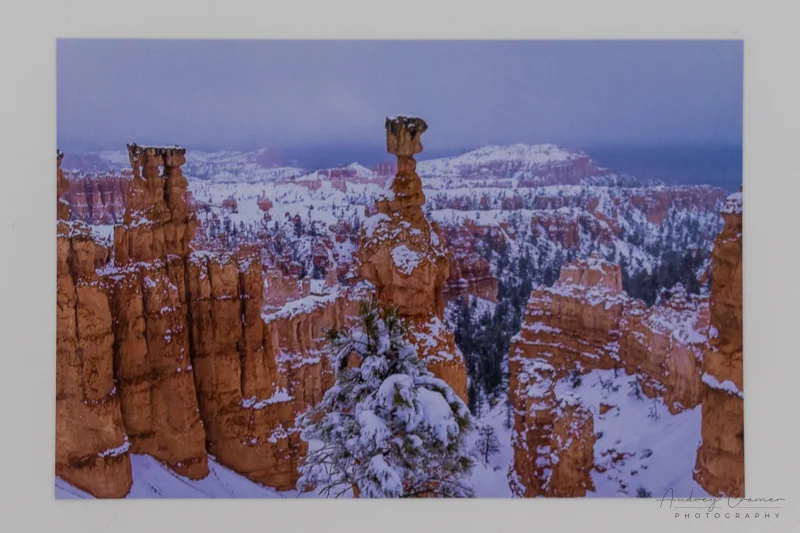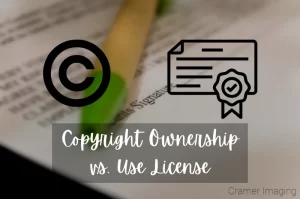I’m sure that you have thought about buying a photo or taking a small sample photo, scanning it, blowing up the size, and printing it. For those who are on a tight budget, this might seem like the ideal way to get great photography for cheap. However, there are some big problems with this approach. That’s what we’re discussing today: the hazards of enlarging a photograph.
Enlarged Photos Pixelate

Let’s start with a really obvious problem. If you try to enlarge a photo, you run into some size problems. The larger you try to make the photo, the more it will break down and pixelate on you. Pixelated photos really don’t look good.
Things worsen when you’re trying to enlarge a really small photo like wallet-sized or smaller. I don’t care what kind of resolution your scanner has. There’s just not enough detail in a wallet-sized photo to make a large wall print. You will lose details. The result will look terrible. There’s no avoiding this. Avoid enlarging a tiny photograph for this reason.
This problem exacerbates even worse, if you can believe it can get worse, when you try to enlarge a photo from off the internet. While some photographers will post full resolution photos for all to see, most photographers reduce the resolution of the photo so that it will load faster. Also, they may even reduce the pixel density to something which will pixelate on print no matter what the dimensions of the photo are.
If you really want a good idea of what this looks like, try these photos below. They are both the same dimensions (number of pixels high and wide) and both the same pixel density. By the way, this won’t quite work out on a mobile screen. You will need a large desktop or laptop screen to see the effect properly.

Now see what happens after I go about artificially enlarging the photograph for you. If you flip your phone landscape orientation and look hard, you might see the photo breaking down some. It won’t compare to a desktop or laptop version, but It’ll give you a good start.
If you are using a larger screen to view this example with, I’m sure that you are cringing the way that I am about seeing the pixelization. This enlarged version will not make any kind of good print.
Depending on the resolution of the image the photographer published in the internet, you might be able to get away with an 8×10 version but you might have other issues to deal with as well. We’ll discuss that point next.
It’s Illegal to Enlarge the Photograph Without Permission

So, if you don’t already know about copyright, here’s a quick rundown for you. (Here’s an article if you want a more in-depth explanation of copyright.) To start with, if you create something, no matter what the purpose of it is, you own the copyright to it. It is yours to do with what you want. So, you can choose to profit financially from it or simply to put it to your own private and personal use. Your creation is yours.
If you are not the photographer who created the photograph you are enlarging, then you do not own the image. It doesn’t matter if you are depicted in the photo or not. The photographer owns the image, period. You have some rights over how your likeness is used but you do not own photos which you did not take yourself. This means that you also cannot alter someone else’s photo without their prior permission. Period. You might be surprised what falls under the heading of altering.
By trying to enlarge (and possibly also crop) a photograph which doesn’t belong to you, you are altering the photo and violating the photographer’s copyright. This is against the law. It carries with it a penalty of a stiff fine for the level of violation and for what you used the photo(s) for.
Consumers, like you, choosing the violate a photographer’s copyright has become such a problem that most consumer photo print labs will not release prints you order if they suspect you might not be the photographer. They don’t want the legal ramifications of assisting you in violating the law. So, they will not sell you prints which you are not the photographer, period.
Be smart. Don’t break the law. Buying a large expensive print is far cheaper than paying the fine and damages of a copyright violation.
Conclusion
While enlarging a photo might seem like a good idea at the time, it’s really a bad idea in the long run. The photo print won’t turn out like you hope it will. Also, you will find yourself in violation of the law with a costly penalty assigned.
In conclusion, if you really love that photo that much, take the time to buy a good copy of the print. That larger (and yes very expensive) print will look much better and, best of all, it’s completely legal.
If you want a better understanding of why photography is so expensive, then you should check out this article here. There we talk about what goes into creating a single photo and why we price it the way we do.




